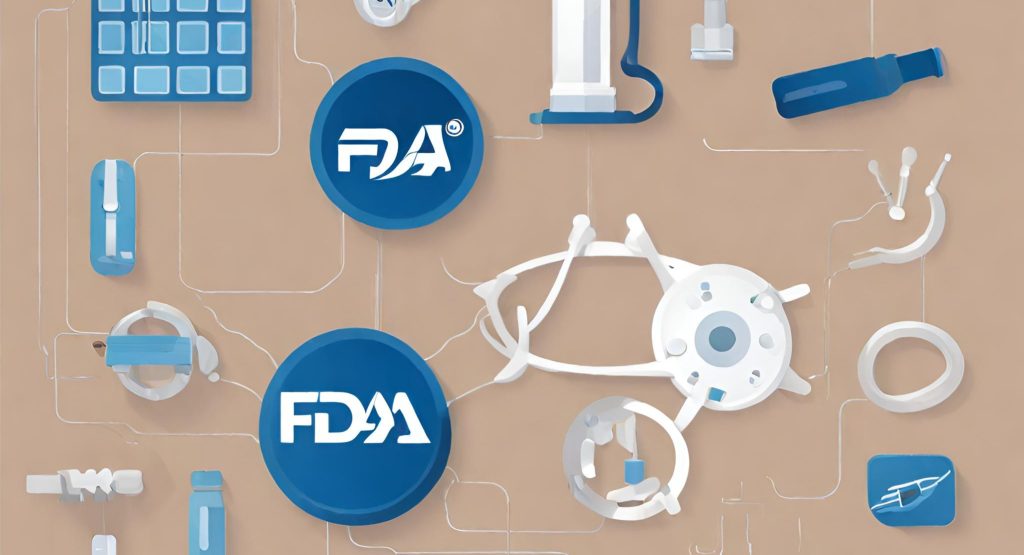
In the ever-evolving landscape of healthcare, understanding medical billing for outpatient services is crucial for both providers and patients. Navigating the intricacies of billing procedures ensures a seamless financial process and contributes to the overall efficiency of healthcare delivery. This article aims to demystify the complexities of medical billing for outpatient services, providing a comprehensive guide that is both informative and accessible.
The Basics of Outpatient Services
Before delving into medical billing, it’s essential to grasp the concept of outpatient services. Outpatient care refers to medical services that do not require an overnight stay in a hospital. Common examples include doctor’s visits, diagnostic tests, and minor surgeries. Understanding the distinction between outpatient and inpatient services sets the foundation for accurate billing.
Let’s explore the key aspects:
Definition and Scope:
- Outpatient services encompass medical treatments, diagnostic procedures, and consultations provided on an ambulatory basis, meaning patients do not stay overnight.
- These services cover a broad array of healthcare needs, including routine check-ups, diagnostic imaging, minor surgeries, infusion therapy, and rehabilitation services.
Common Outpatient Facilities:
- Ambulatory Care Centers: These facilities focus on providing outpatient services, offering a range of medical specialties in a convenient setting.
- Urgent Care Centers: Immediate, non-emergency care for acute conditions that don’t require a visit to the emergency room.
- Physician Offices: Primary care and specialty physicians often provide outpatient services in their offices.
- Diagnostic Centers: Laboratories and imaging centers offering tests and scans without the need for hospital admission.
Benefits of Outpatient Services:
- Cost-Effective: Outpatient care is generally more cost-effective than inpatient care, as it eliminates the expenses associated with hospital stays.
- Convenience: Patients can schedule appointments at their convenience, reducing disruptions to daily life.
- Efficiency: Many outpatient procedures are performed swiftly, allowing patients to return to their normal activities promptly.
- Preventive Care: Outpatient services are integral to preventive care, enabling early detection and management of health issues.
Typical Outpatient Procedures:
- Routine Check-ups: Regular health assessments and screenings.
- Diagnostic Imaging: X-rays, MRIs, CT scans, and ultrasounds for diagnostic purposes.
- Minor Surgeries: Surgeries that do not require an overnight stay, such as cataract surgery or certain orthopedic procedures.
- Infusion Therapy: Administration of medications through intravenous or injection methods.
- Rehabilitation Services: Physical therapy, occupational therapy, and other rehabilitative interventions.
Insurance Coverage:
- Most health insurance plans cover outpatient services, but it’s crucial to verify coverage details before seeking care.
- Co-payments, deductibles, and co-insurance may apply, depending on the individual’s insurance plan.
Appointments and Scheduling:
- Outpatient services typically operate on an appointment basis, allowing for efficient use of both healthcare providers’ and patients’ time.
- Patients are encouraged to schedule appointments in advance, although urgent care centers offer walk-in services for immediate medical needs.
- Understanding the basics of outpatient services empowers individuals to make informed decisions about their healthcare. From routine check-ups to specialized procedures, outpatient care plays a pivotal role in promoting health and well-being while offering flexibility and convenience to those seeking medical attention.
The Importance of Accurate Documentation

Accurate documentation is the cornerstone of successful medical billing. Healthcare providers must meticulously record all relevant details, including patient demographics, medical history, and details of the services rendered. Precise documentation not only ensures correct billing but also contributes to improved patient care and compliance with regulatory requirements.
Let’s explore the importance of accurate documentation in the outpatient setting:
Patient Care and Safety:
- Accurate documentation ensures a comprehensive and up-to-date medical record for each patient. This information is vital for healthcare providers to make informed decisions about diagnosis and treatment.
- Proper documentation helps prevent errors in medication administration, treatment plans, and other aspects of patient care, contributing to overall patient safety.
Continuity of Care:
- Accurate documentation facilitates seamless communication among healthcare providers across different departments and specialties. This continuity of care is particularly essential in outpatient settings where patients may see various specialists.
- Comprehensive documentation allows healthcare teams to understand a patient’s medical history, ongoing treatments, and any specific considerations that may impact care.
Legal and Regulatory Compliance:
- Healthcare facilities must adhere to a myriad of regulations and standards, including those set forth by health departments, accrediting bodies, and insurance providers. Accurate documentation is essential for compliance with these regulations.
- In the event of legal proceedings, thorough and accurate documentation serves as a defense, providing a clear record of the care provided and decisions made.
Billing and Reimbursement:
- Accurate documentation is directly tied to the financial aspects of healthcare. Properly documented services support accurate medical coding, which is essential for billing and reimbursement.
- In outpatient services, where various procedures and tests are conducted, precise documentation ensures that all services rendered are appropriately billed, reducing the risk of claim denials and delayed payments.
Research and Quality Improvement:
- Aggregated and de-identified patient data from accurate documentation contribute to medical research and quality improvement initiatives. This data aids in identifying trends, improving treatment protocols, and enhancing overall healthcare outcomes.
- Quality improvement efforts rely on the analysis of documented information to identify areas for enhancement in patient care processes.
Insurance Audits and Reviews:
- Insurance companies may conduct audits or reviews of healthcare provider documentation to ensure compliance with billing and coding standards. Accurate documentation supports providers in these processes, reducing the likelihood of penalties or legal consequences.
Professional Accountability:
- Accurate documentation reflects the professionalism and diligence of healthcare providers. It serves as a testament to the standards of care delivered and is an essential aspect of professional accountability.
In conclusion, accurate documentation in outpatient services is indispensable for delivering safe and effective patient care, complying with regulations, ensuring proper billing, supporting research initiatives, and maintaining the integrity of the healthcare system. Healthcare providers and staff must prioritize meticulous documentation practices to uphold the highest standards of care and contribute to the overall improvement of healthcare delivery.
Coding and Billing Procedures

Medical coding is a standardized system that translates medical services and procedures into alphanumeric codes. These codes play a pivotal role in the billing process, facilitating communication between healthcare providers and insurance companies. Common coding systems include CPT (Current Procedural Terminology) and ICD-10 (International Classification of Diseases, 10th Edition). Familiarizing oneself with these codes is essential for accurate billing. Here’s an overview of coding and billing procedures:
Coding Systems:
- CPT (Current Procedural Terminology): Developed by the American Medical Association (AMA), CPT codes are used to describe medical, surgical, and diagnostic services. These codes are essential for outpatient procedure documentation.
- ICD-10 (International Classification of Diseases, 10th Edition): These codes, endorsed by the World Health Organization (WHO), classify diseases and health conditions. ICD-10 codes complement CPT codes and provide a comprehensive overview of a patient’s health status.
The Role of CPT Codes:
- CPT codes specify the services provided during outpatient visits. They cover a wide range of procedures, including consultations, diagnostic tests, surgeries, and therapeutic interventions.
- Each CPT code corresponds to a specific medical service or procedure, allowing for standardized communication between healthcare providers and payers.
ICD-10 Codes for Diagnosis:
- ICD-10 codes document a patient’s diagnosis or medical condition. These codes provide crucial information for understanding the medical necessity of procedures and treatments.
- Combining CPT and ICD-10 codes creates a comprehensive picture of the patient encounter, supporting accurate billing and insurance reimbursement.
Medical Necessity:
- Coding and billing procedures hinge on medical necessity. It’s essential to demonstrate that the services provided are medically necessary for the patient’s condition. This justification is often required for reimbursement by insurance providers.
Insurance Verification and Pre-authorization
Prior to providing outpatient services, healthcare providers must verify patients’ insurance coverage. This step ensures that the services offered are eligible for reimbursement. Additionally, some procedures may require pre-authorization from the insurance company. Failing to complete these steps can result in delayed payments or denials, underscoring the importance of a thorough verification process.
Electronic Health Records (EHR) and Billing Software
The integration of Electronic Health Records (EHR) and billing software has streamlined the medical billing process. These tools enhance efficiency, reduce errors, and improve communication between healthcare providers and payers. Staying abreast of technological advancements in the healthcare industry is crucial for optimizing outpatient service billing.
Compliance with Regulatory Requirements
Medical billing is subject to numerous regulations, including those set forth by the Health Insurance Portability and Accountability Act (HIPAA) and the Centers for Medicare & Medicaid Services (CMS). Healthcare providers must adhere to these guidelines to safeguard patient privacy and ensure ethical billing practices.
Telemedicine Compliance:
- Telehealth Regulations: Compliance with regulations specific to telemedicine services ensures the legality and security of virtual healthcare encounters.
- Importance: Facilitates the expansion of telehealth services while maintaining patient safety and privacy.
Emergency Medical Treatment and Labor Act (EMTALA):
- Emergency Care Mandate: Requires hospitals and ambulatory care centers to provide emergency medical care regardless of a patient’s ability to pay.
- Importance: Ensures access to emergency services for all individuals, promoting ethical and humane care.
FDA Regulations for Diagnostic and Therapeutic Devices:

- Medical Device Regulations: Compliance with FDA regulations is essential for the use and maintenance of diagnostic and therapeutic devices.
- Importance: Ensures the safety and efficacy of medical devices used in outpatient settings.
Accreditation Standards:
- Accrediting Bodies (e.g., Joint Commission): Compliance with accreditation standards demonstrates a commitment to quality care and patient safety.
- Importance: Enhances the reputation of healthcare facilities and may be a requirement for reimbursement by certain payers.
Continuing Education and Training:
- Ongoing Professional Development: Regular training for healthcare staff on regulatory updates and best practices ensures a knowledgeable and compliant workforce.
- Importance: Fosters a culture of continuous improvement and responsiveness to evolving regulatory requirements.
Data Security and Electronic Health Records (EHR) Compliance:
- HITECH Act: Ensures the security of electronic health records (EHR) and protects patient information from breaches.
Importance: Safeguards sensitive health data, maintaining patient trust in the digital age.
Conclusion:
In conclusion, a solid understanding of medical billing for outpatient services is essential for healthcare providers and patients alike. Accurate documentation, knowledge of coding procedures, insurance verification, and compliance with regulations are key components of a successful billing process. By embracing these principles, healthcare professionals can navigate the complexities of medical billing, ultimately contributing to improved patient care and financial transparency in the healthcare industry.
Recent Comments